for our enjoyment many cities have recovered their rivers , who lived with their backs turned to their citizens, with depressed and abandoned areas that now teem with life. When the runner packs his running shoes for a trip to a city with a river, he knows he's in for an exhilarating plan. Thoreau already said: "He who knows how to listen to the murmur of rivers will never feel complete despair".
River and corridor run parallel and at the same time, sometimes in the same direction and sometimes in the opposite direction. He encourages me to know that the water also moves , which is not still and is another invitation to jog and move . Because I like the action of running as much as the word itself. I do not feel identified with the anglicisms jogging, jogging -a friend recently reminded me of this word, fashionable in the 80s-, nor the current one, running. "Run" Y "runner" they indicate everything necessary, without the need to borrow anything from anyone. The terms appear in the titles of several books related to the subject: the stupendous The Loneliness of the Long Distance Runner Y Run –by Allan Sillitoe and Jean Echenoz, respectively-, or What I mean when I talk about running , by Murakami. I can't imagine them in other words. And even less if we plan to accompany a river for a few kilometers, following its current or against the current.
This article is an invitation to explore the rivers of three cities, exploring the shore with a smooth and continuous jog, relaxed, allowing the landscape to reveal itself to the rhythm of our footsteps.
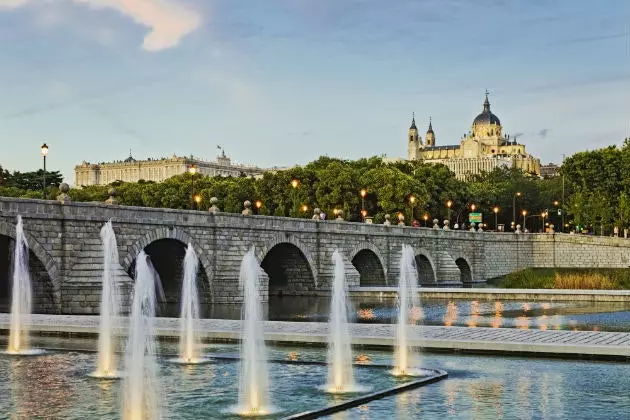
On the banks of the Manzanares, in Madrid.
MADRID RÍO, THE GREAT HUMAN FLOW
I was not aware that I lived in a city with a river until I walked the entire perimeter of Madrid Rio , the internationally acclaimed riverside reclamation project. I suppose the same thing happened to the thousands of people from Madrid who flood its banks every day, a valuable human flow proud of the intervention. Fernando Porras-Island , one of the architects behind the work, tells me: "The best thing is to see how the citizens have taken the river, made it their own and live it with intensity in each stretch."
The Manzanares, that humble and quiet river, smiles perhaps for the first time in its history. Now, more than recovering a lost identity, he has conquered it, because he never had it. The intervention - complicated and that took longer than expected- it is decisive, subtle and non-invasive , and last year received the Veronica Rudge Award for sustainable urban spaces, awarded by Harvard University.
From the Principe Pio Roundabout begins the monumental course that connects the river with the Country house on one side , and the historic center of the city on the other. “One of my favorite places is the Huerta de la Partida viewpoint , some of the best views of the city. From there it was made, in the s. XVI, the first drawing of Madrid, the work, of Anton van der Wyngaerde , known in Spain as Antonio de las Viñas”, explains Fernando Porras-Isla.
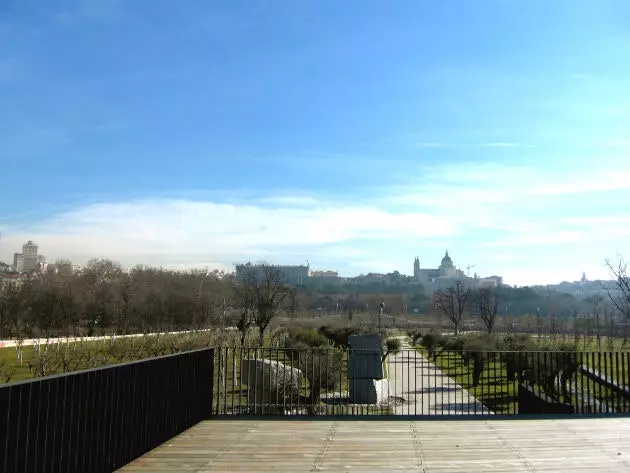
Huerta de la Partida viewpoint.
Going a bit further - the complete section has seven kilometers, approximately -, appears the Hall of Pines , which allows you to run surrounded by thousands of pine trees. You access the beautiful greenhouse of the Arganzuela Park, and you arrive at the Matadero, where the river continues its course to the Jarama.
I love going through each bridge: the Principality of Andorra, the Arganzuela footbridge by the architect Dominique Perrault and the two twin bridges -of the greenhouse and the Matadero- with vaulted structures that contain two colorful mosaics by Daniel Canogar that show children and adults suspended in the air, jumping.
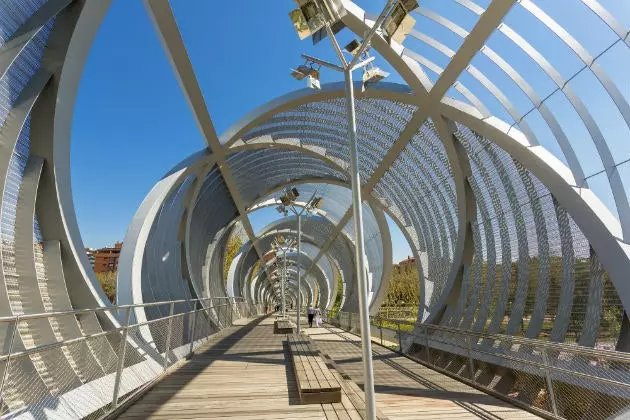
Arganzuela Bridge.
PORTO AND THE DORADO RIVER
Porto and the Douro, Porto and the Douro , two indivisible realities that forge the port character of the northern Portuguese city, with water so present in all areas of life. After traveling a channel of 900 kilometers, the river empties into the Atlantic: one of the banks is dedicated to the wine industry and market , and in the other the monumental area spills over a hill.
One of my favorite routes to run and cross the Douro is "go from bridge to bridge and shoot because the current takes me", remembering the childhood game of the goose. Thirty minutes of easy jogging from the Arrábida bridge -the one with the steel arch, one of the six that join the two banks- to the imposing bridge of Don Luis I. One of the examples of a disciple overcoming his teacher: the German engineer Theophile Seyrig he obtained the project by beating Gustave Eiffel in a contest.
The most outstanding characteristics of the bridge are the great arch -which extols its beauty- and the delicate decorative applications -also made of iron- in the interior spiral stairs and on the railings at the top.
From bridge to bridge you can enjoy a general view of the evolution of city architecture . The early 20th century industrial Electric Car Museum -of the tramway-, the port houses with their facades covered with tiles and the clothes hanging in the windows, The Alfandega , the exhibition center whose interior has been restored by the Souto de Moura -disciple of Álvaro Siza-, or the bustling terraces of Ribeira. Just before reaching the bridge, you can come across a small sculpture, again by Souto de Moura, in honor of a bridge made up of boats where thousands of people fleeing French troops perished in 1809.
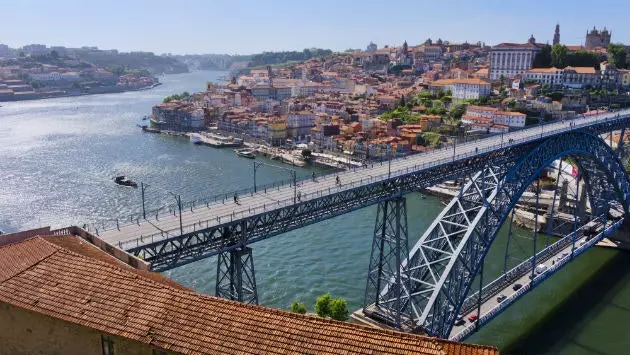
Porto and the 'golden' river.
RUN THROUGH THE PARIS SPINE
It doesn't matter at what height Sign start running, or on which of the banks: each part is overwhelming, and you don't get used to the beauty that the city displays in every meter you advance.
In addition to the possibility of going through the alamedas of the Tuileries Garden -located next to the Louvre museum - and reach the Grand Palais , a classic route for Parisians, you can go down to the quays of the Seine and, in the opposite direction, take a dive on the river bank. We will have the main façade of the Louvre on one side and the Place de la Concorde, Rue Rivoli and the Musée d'Orsay the other. we will arrive at Pont des Arts , we will pass the Ile de France and Notre Dame and, if we have strength left, we can go through the Garden of Plants , the Austerlitz train station, the impressive phosphorescent and undulating building Les Docks , the City of Mode and Design , and get to the National Library of France - by Dominique Perrault -, where stretching exercises can be performed on its wide esplanades.
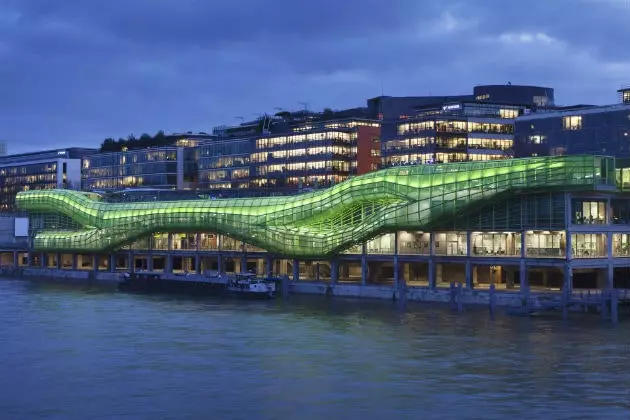
The City of Mode and Design.
Another of my favorite circuits is the Canal Saint-Martin . It crosses a neighborhood that can be considered a small city within another and with a river that really isn't. Its greenish waters and greenish bridges extend through 4.5 km in length in the shade of large plane trees and chestnut trees. There it seems that it is always spring: at any time of the year you can see Parisians picnicking on its banks. Artists, designers and creators from all walks of life live and work in the area.
It's worth getting to Parc de la Villette from the Quai de Valmy , or start there and end at the house of architecture , former convent des Récollets, a very quiet place, with a cloister and an interior patio where you can do your final exercises.
The runner has, then, another pleasure that of mental review of the route, So many buildings, faces, clothes, sounds and colors remain on the retina that it is worth closing your eyes for a while so that the brain also stops its frantic and stimulating race. A race letting yourself be carried away by the rhythm of a body that follows the current or goes against the current.
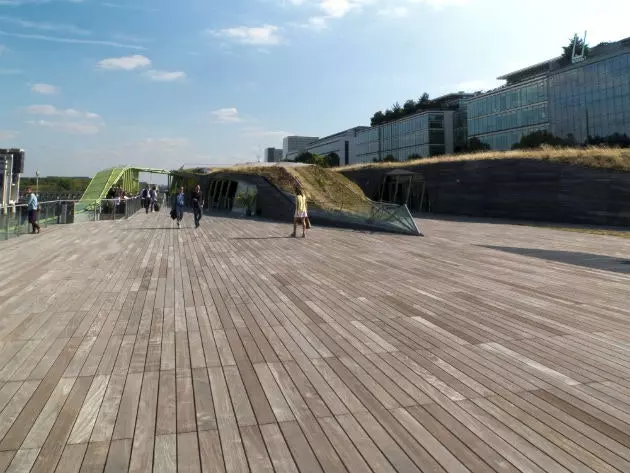
Les Docks, Paris.
Read more articles:
- The best routes to run in Madrid.
- neighborhoods across the river.
- Bridges in Europe that need to be crossed once in a lifetime.
